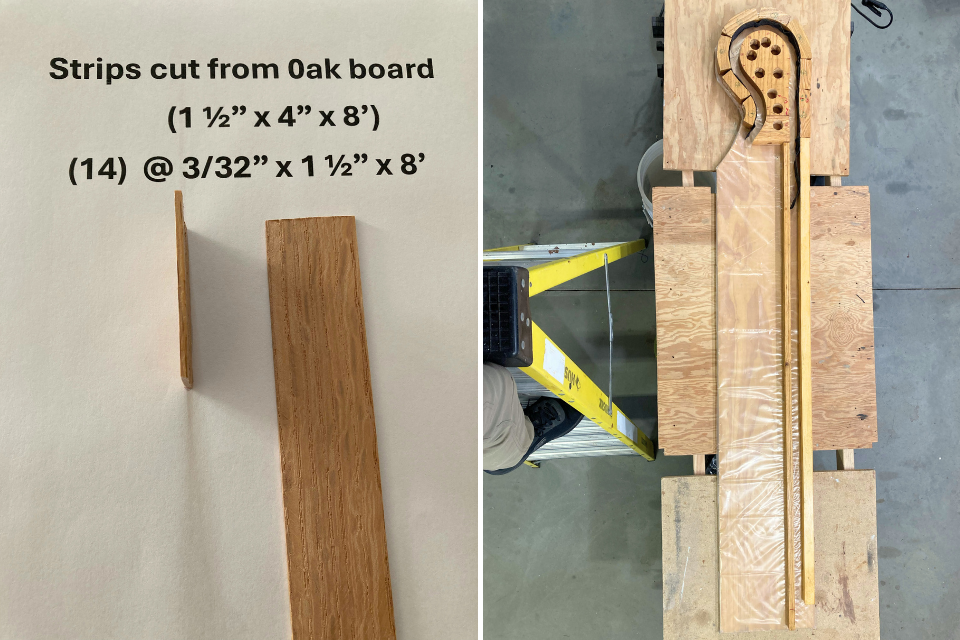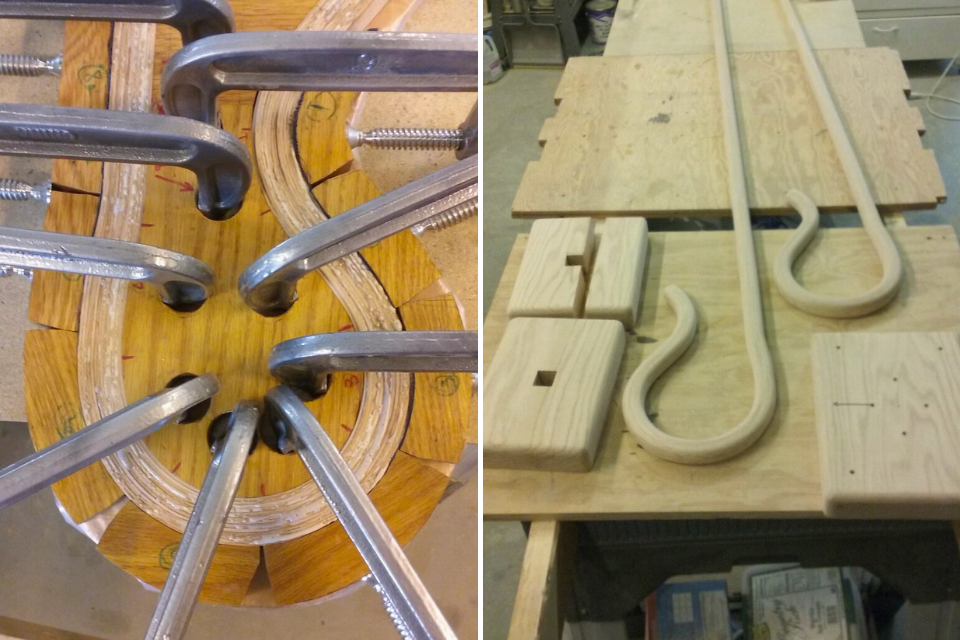For almost 25 years, Rev. Art Scanson has used his artistic gifts to create crosiers for each newly elected bishop within the North Central Jurisdiction.
JAMES DEATON
Content Editor
Meticulous. Patient. Handled with care and intentionality. Done with pride. Gift from the heart.
These words describe the craftsmanship of Rev. Art Scanson, who has been creating wooden crosiers for newly elected bishops in the North Central Jurisdiction since 2000.
This retired elder from Bismarck, North Dakota, takes great pride in this unique ministry, from the initial cutting of the thin strips of red oak to applying the fourth and final coat of polyurethane. Art’s dedication is inspiring; he has made crosiers for 13 bishops within the jurisdiction. The last crosiers were made in 2022 when three new bishops were consecrated.
A crosier is a hooked staff carried by United Methodist bishops to symbolize the pastoral office. Received as a gift upon their election and consecration, bishops carry them during ceremonial events in their episcopal area, like ordinations. The Book of Discipline states that one of the roles of the bishop is to be “shepherd of the whole flock and thereby provide leadership toward the goal of understanding, reconciliation, and unity within the Church” (¶ 403).
Art understands the shepherd metaphor because he grew up having sheep in 4-H and later became a pastor who took the well-being of the people under his care seriously.

Woodworking is a God-given skill that he’s developed since he was a child, and he has made various items over the years, including cabinets and buildings. He learned the trade from his father, a self-made carpenter who did woodworking in the wintertime as the fields lay fallow. “He made everything from pole barns to rocking chairs for little kids,” Art said.
Creating a shepherd’s crook with its curved neck is no simple task, but Art has perfected his art over the 20-plus years. Given the short lead time that year, he wasn’t satisfied with the first crosiers he made, but then he did some research. He discovered that gluing thin strips of wood together as they are bent will hold them in a desired shape, and the strips won’t come apart.
But timing is critical during assembly. Once Art cuts 14 thin strips (a mere 3/32″ in thickness) from an 8′ x 1½” foot piece of red oak and starts putting them together, he has 30 minutes to glue all 14 strips together, put them into a jig (a device that holds the crosier in its curved shape), and clamp them down. The glue dries fast, and Art must move quickly.
Once the glue cures for at least twenty-four hours, Art removes the crosier from the jig, lovingly removing any imperfections in the wood, and begins the finishing process. He sands, stains, and applies four layers of polyurethane as a final coating.

Art also creates a two-layer wooden base that keeps the crosier upright when not used. To protect the crosier while being transported, he also sews a canvas bag for the staff and a second one with handles for the base.
This ministry of making set-apart physical items used in worship is similar to those whose craftsmanship and skillful hands built the tabernacle in scripture. The story of Bezalel in Exodus 31:1-5 comes to mind. He was filled with “a divine spirit, with ability, intelligence, and knowledge” and used his artistic abilities to carve wood and work in “every kind of craft.”
Art finds joy in this work. “It’s something I can do, for me to be able to help in this way, to help symbolize to other people the holiness of the bishop’s role and the pageantry of the church.”
Last Updated on July 13, 2024

